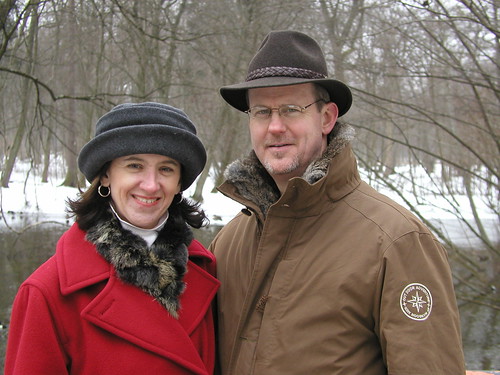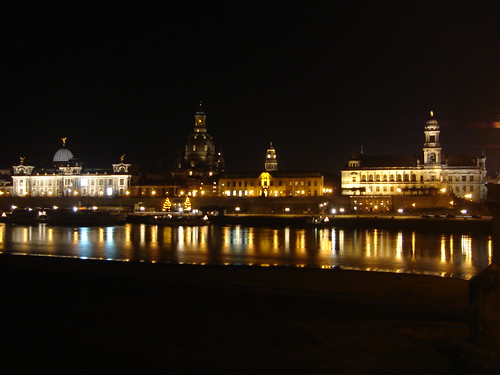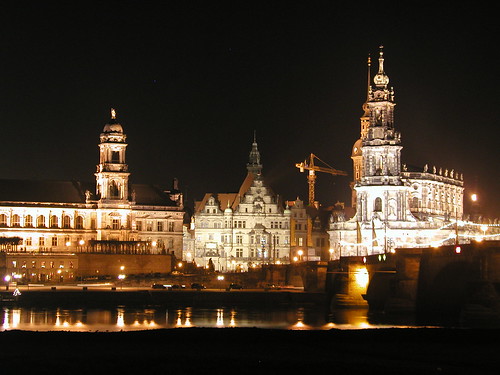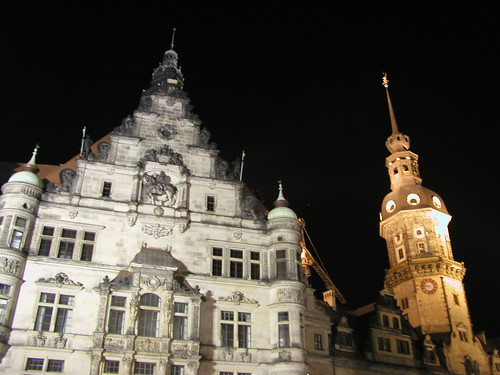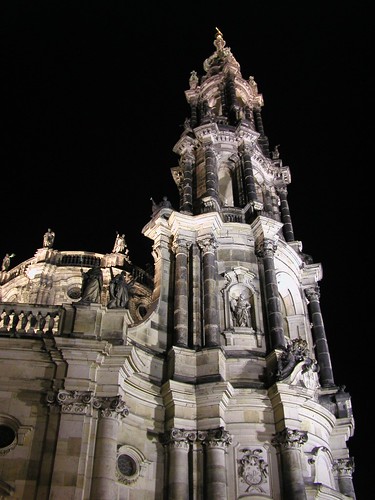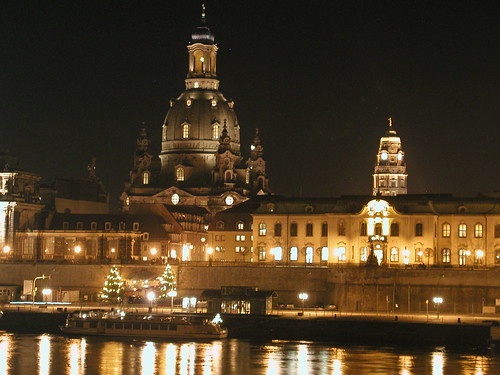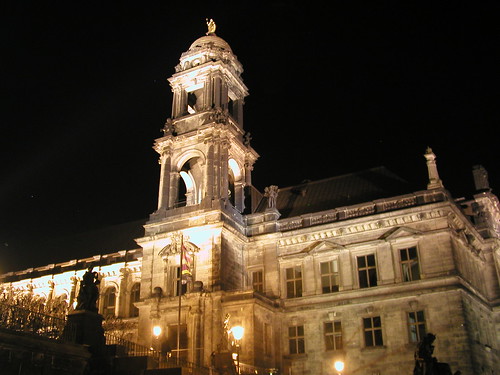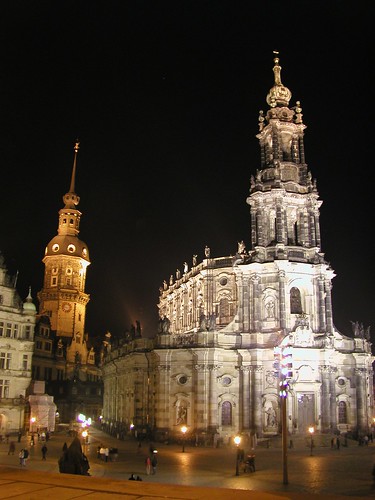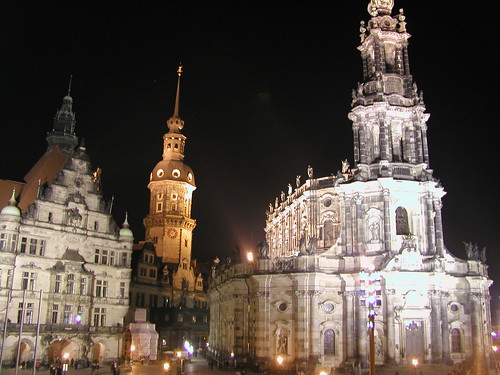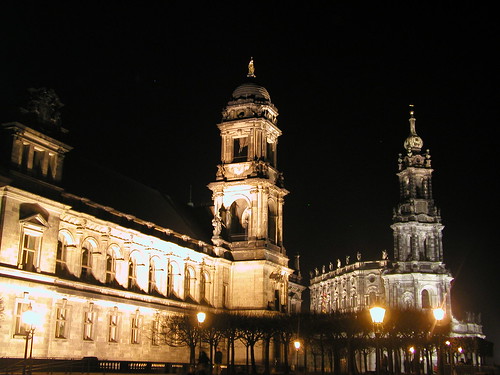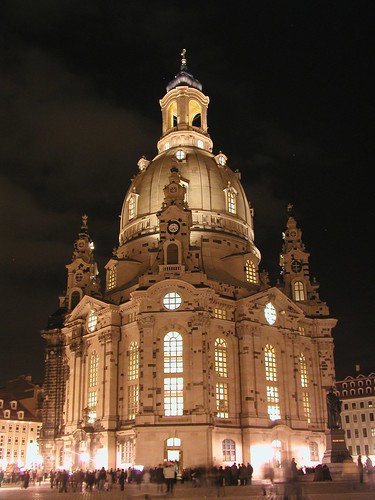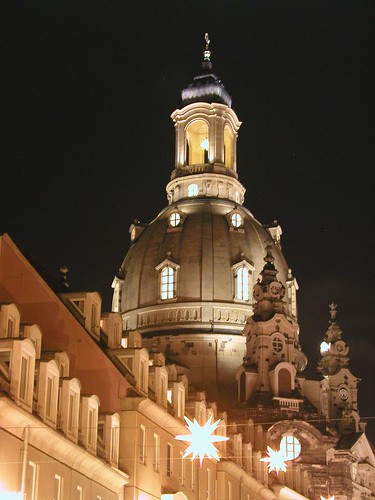Wednesday, December 27, 2006
Frohe Weihnachten
Thursday, December 21, 2006
Here a nussknacker, there a nussknacker, everywhere a nussknacker
As the countdown to Christmas continues, thought I share some Nussknacker factoids. I mean, they’re a Christmas tradition in Germany.
Beautifully crafted wooden nutcracker figures that crack nuts in their jaws have existed since at least the 16th century, when artisans in Switzerland, France, Germany, England, and northern Italy carved them in a variety of animal and human forms. By the mid-1700s, they had become a common product of the Erzgebirge region of eastern Germany and Bohemia, an area famous for toy making, and were sold at the Dresden Christmas fair (yes, I can confirm this occurs even today).
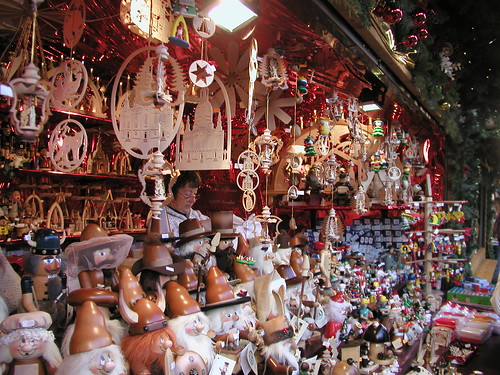
The nutcracker made his first significant appearance in Nussknacker und Mausekönig (Nutcracker and Mouse King), a supernatural tale written by the German author and composer E.T.A. Hoffmann in 1816. The original story was a bit more sinister than Tchaikovsky’s Nutcracker Suite. Both stories, however, center around the nutcracker hero, a prince-like figure who fends off an invading army of mice on Christmas Eve.
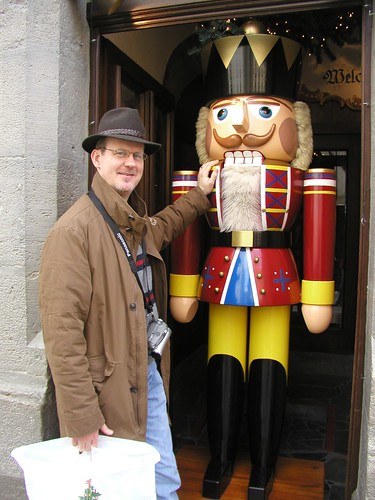
At the time the story was originally penned, the nutcracker was a toy given to German children of well-to-do families. Wooden nutcrackers shaped like soldiers, kings, and other figures of authority were especially popular gifts at Christmas.
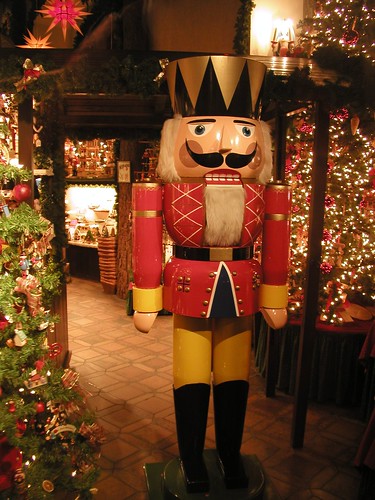
In the first dictionary of High German, compiled by the Brothers Grimm in the 19th century, the nussknacker is defined as a tool “often in the form of a misshaped little man, in whose mouth the nut, by means of a lever or screw, is cracked open.”
The nutcracker did not always play the role of good-hearted prince or soldier. It was often given grotesque features and the long robe of a monk, a policeman’s uniform, or even the piked helmet and mustache of the Kaiser. By the end of the 19th century, most nutcrackers in toy catalogues were clearly caricatures of contemporary authorities. What started out as a practical tool became a medium for social commentary.
The village of Seiffen (Saxony) remains the heart of nutcracker production today in Germany. More than 75% of all nutcrackers created in the region find their way to the American market.
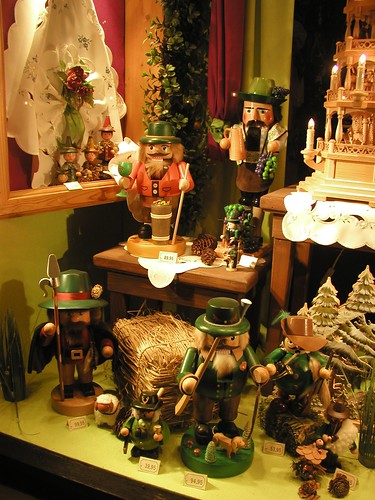
Beautifully crafted wooden nutcracker figures that crack nuts in their jaws have existed since at least the 16th century, when artisans in Switzerland, France, Germany, England, and northern Italy carved them in a variety of animal and human forms. By the mid-1700s, they had become a common product of the Erzgebirge region of eastern Germany and Bohemia, an area famous for toy making, and were sold at the Dresden Christmas fair (yes, I can confirm this occurs even today).

The nutcracker made his first significant appearance in Nussknacker und Mausekönig (Nutcracker and Mouse King), a supernatural tale written by the German author and composer E.T.A. Hoffmann in 1816. The original story was a bit more sinister than Tchaikovsky’s Nutcracker Suite. Both stories, however, center around the nutcracker hero, a prince-like figure who fends off an invading army of mice on Christmas Eve.

At the time the story was originally penned, the nutcracker was a toy given to German children of well-to-do families. Wooden nutcrackers shaped like soldiers, kings, and other figures of authority were especially popular gifts at Christmas.

In the first dictionary of High German, compiled by the Brothers Grimm in the 19th century, the nussknacker is defined as a tool “often in the form of a misshaped little man, in whose mouth the nut, by means of a lever or screw, is cracked open.”
The nutcracker did not always play the role of good-hearted prince or soldier. It was often given grotesque features and the long robe of a monk, a policeman’s uniform, or even the piked helmet and mustache of the Kaiser. By the end of the 19th century, most nutcrackers in toy catalogues were clearly caricatures of contemporary authorities. What started out as a practical tool became a medium for social commentary.
The village of Seiffen (Saxony) remains the heart of nutcracker production today in Germany. More than 75% of all nutcrackers created in the region find their way to the American market.

Dresden Christmas Market
Well, the last of the 2006 German Christmas Market whorlwind tour included a stop in Dresden. A couple of more years, and we will have hit most of the major markets and done a bit of city sightseeing in the process. The Dresden Christmas Market had a lot of the same booths, food, and sights/sounds of other German Christmas Markets but there was a more homier feel (less commercial) to this market than the others we've seen this year. Even the decorations seemed more homespun.
Dresden needs no "kitschy" marketing ploy to attract visitors to this market as it is one of the oldest in Germany. Food highlights included the Thuringer Bratwurst and Flammkuchen; the other claim to fame is the Dresden Stollen. It was being sold EVERYWHERE.
Yes, the Budman drew "first blood", making the first purchase of the day.
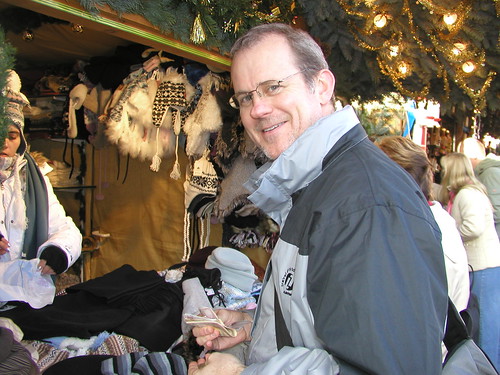
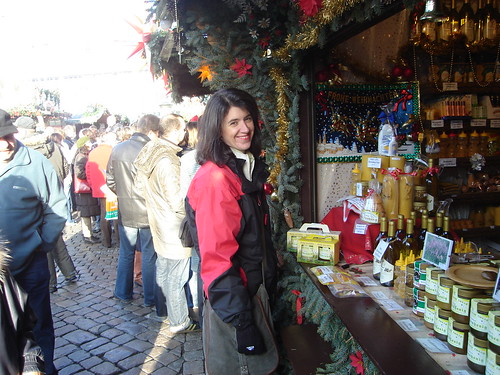
One of many Dresden Stollen booths.
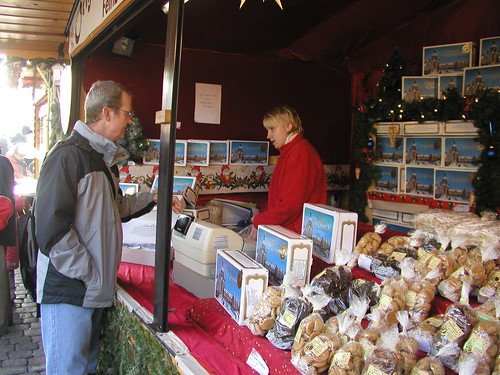
Local woodcarvings from Saxony.

Scenes from the Christmas Market.

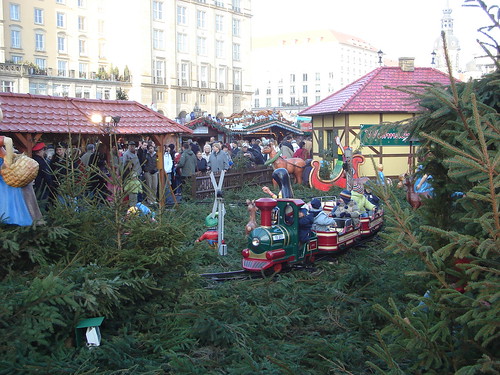
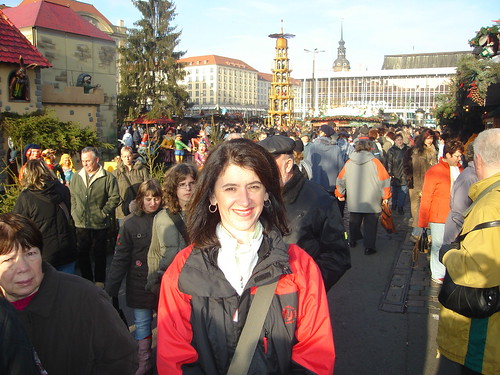
Raisen Man – this giant version of the Raisen men sold in Dresden Christmas markets. I have yet to understand exactly why, but this apparently an Eastern German tradition as we saw the same booths last year in Nuremburg.
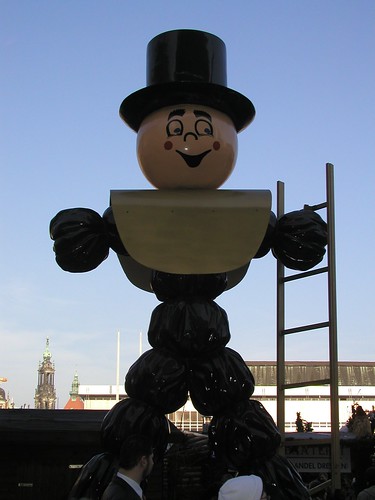
Christmas market by night.
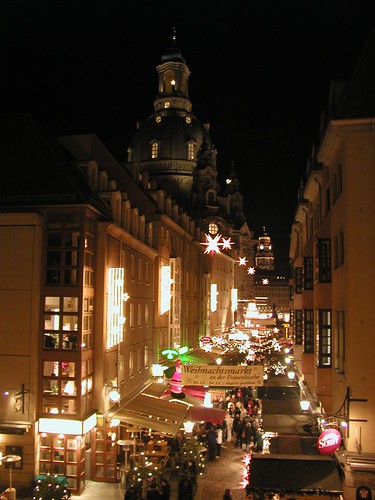
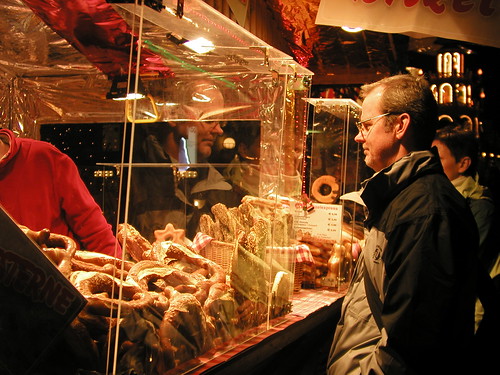 The Gluwhein hut …
The Gluwhein hut …
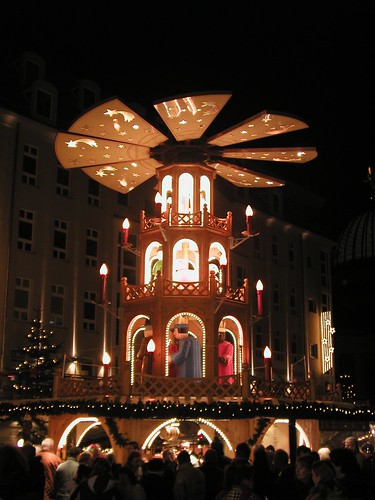
Winner of the wackiest Christmas decoration of the season. Why are a beer bottle and two sausages hanging from a tree? What gives?
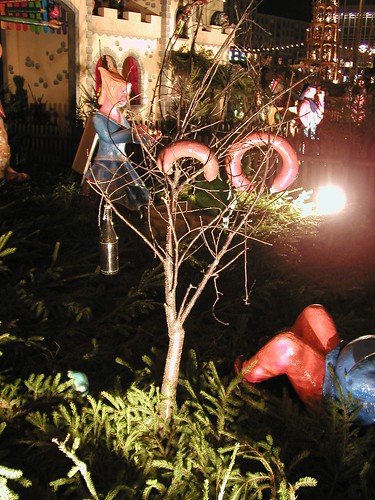
Dresden needs no "kitschy" marketing ploy to attract visitors to this market as it is one of the oldest in Germany. Food highlights included the Thuringer Bratwurst and Flammkuchen; the other claim to fame is the Dresden Stollen. It was being sold EVERYWHERE.
Yes, the Budman drew "first blood", making the first purchase of the day.


One of many Dresden Stollen booths.

Local woodcarvings from Saxony.

Scenes from the Christmas Market.



Raisen Man – this giant version of the Raisen men sold in Dresden Christmas markets. I have yet to understand exactly why, but this apparently an Eastern German tradition as we saw the same booths last year in Nuremburg.

Christmas market by night.


Winner of the wackiest Christmas decoration of the season. Why are a beer bottle and two sausages hanging from a tree? What gives?

Wednesday, December 20, 2006
Dresden by night
"Florence on the Elbe"
Known as “Florence on the Elbe”, Dresden was world renowned during the 18th and 19th centuries as a city of great beauty...from its fabulous architecture to being considered the cultural centre of Saxony. Sadly, most of these great buildings were destroyed in WWII, when on February 13th, 1945, British and US air forces mounted a vast carpet bombing raid on the city. Thousands of people perished in this air raid as well.
Many of the buildings continued to lie in rubble as late as 1995, when work began on several notable buildings including the Residenzschloss and the Frauenkirche. Meticulous restoration is still underway today but it ia exciting to see the city continuing to rebuild. Our recent trip allowed these photos
Frauenkirche - this Lutheran church located in the Altstadt area just completed its restoration in October 2005. Throughout the entire weekend we were visiting, the lines to enter this church snaked throughout the market square. Still, it was worth the wait to see this painstaking reconstruction - simply beautiful.
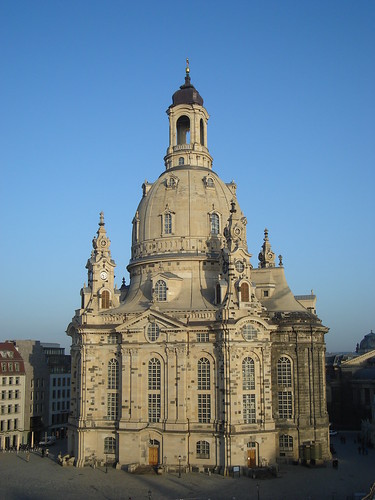
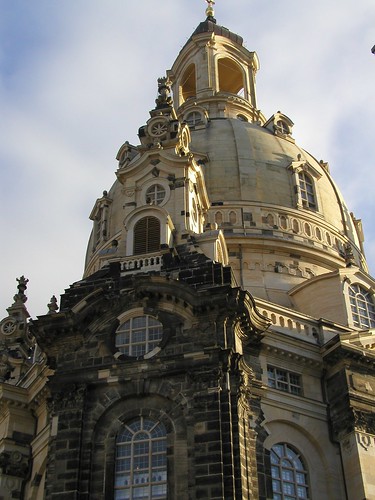
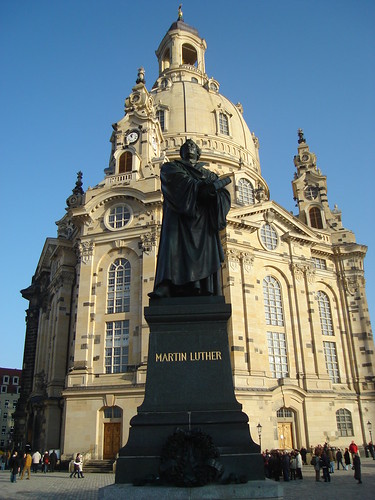
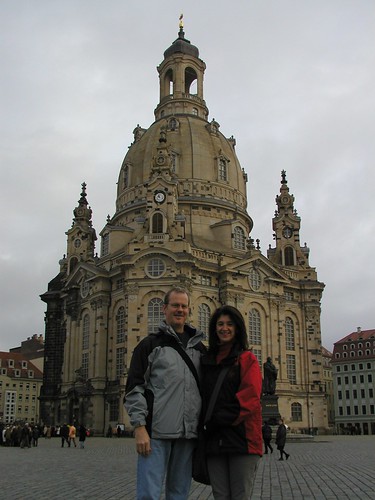
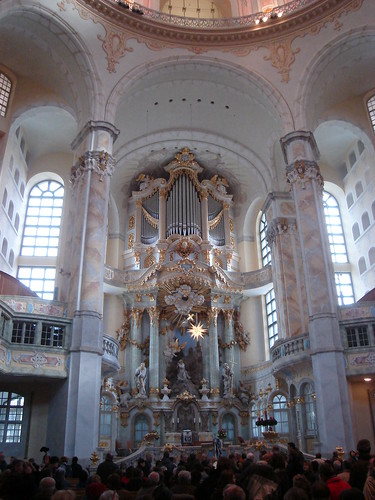
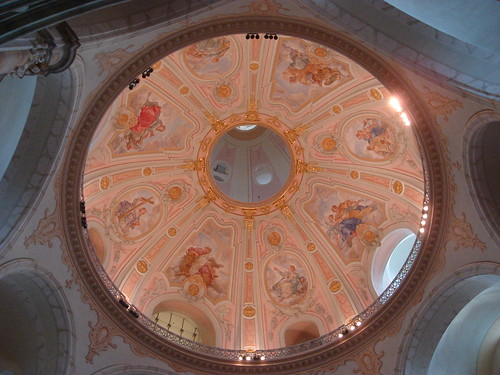
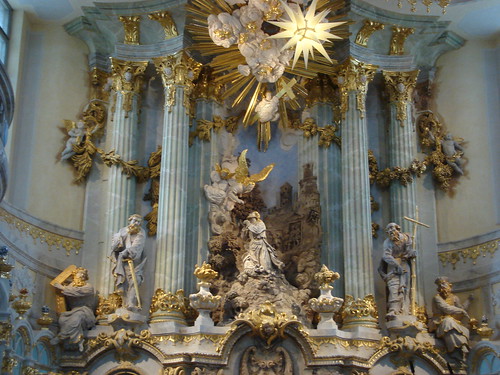
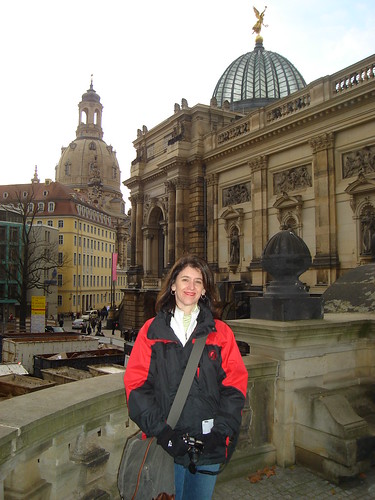
Residenzschloss - the palace continues to undergo restoration, with the most recent completion being the "Green Vaults". If you have time to only see one thing in Dresden, this is it. However, their are 2 exhibits: the Historical Green Vaults and the New Green Vaults. Both are interesting, but the Historical Green Vault is the one that allows you to see the room decor along with many of the artifacts. Tickets go on sale at 10 am every day; limited tickets are available, so get there early. Tickets for the day's tours were gone by 10:30 am.
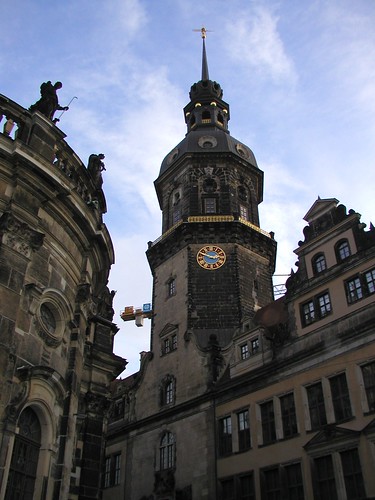
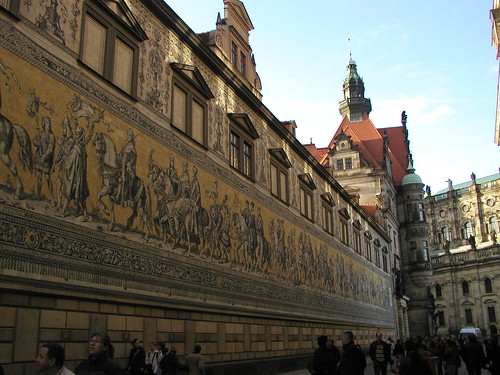
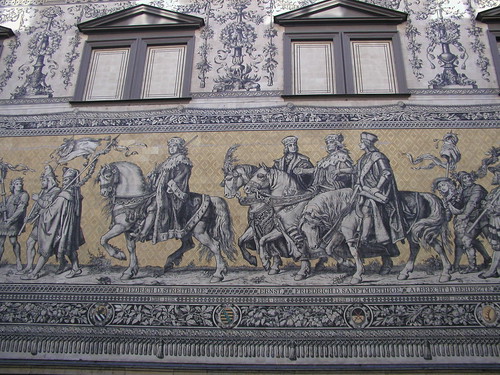
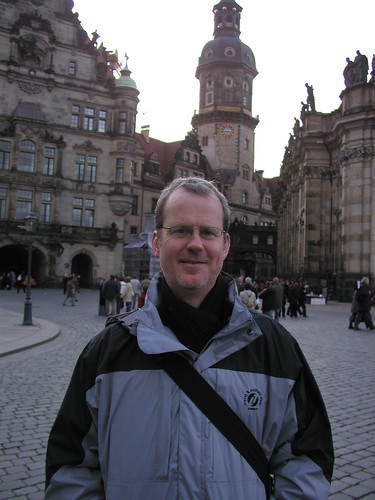

Hofkirche - another lovely church in Dresden.
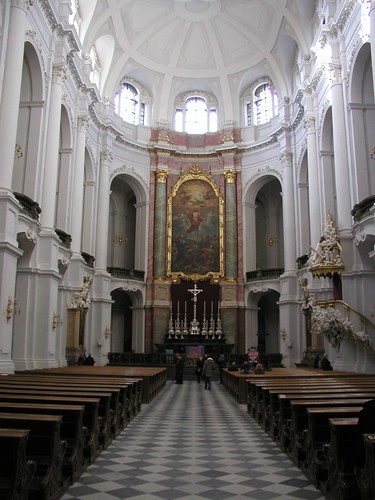
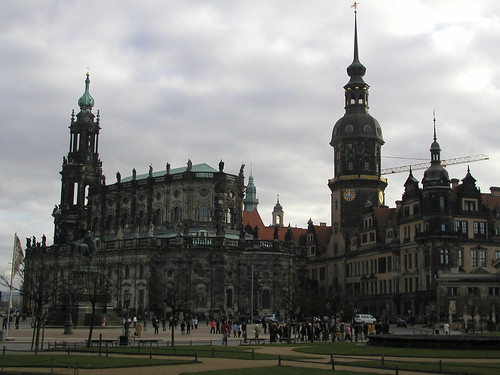
Zwinger - this "palace converted art museum" contains many of the city's greatest art treasures.
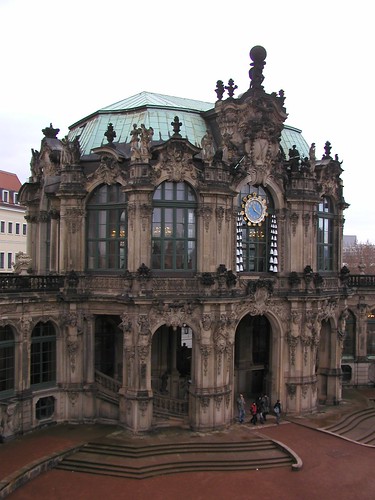
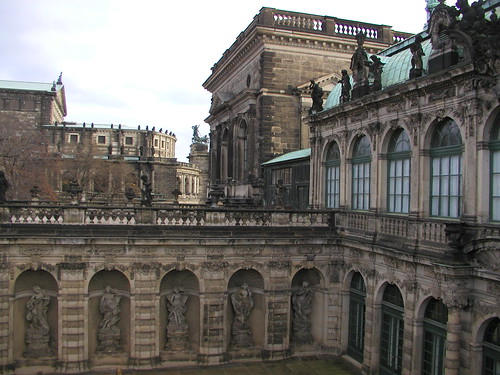
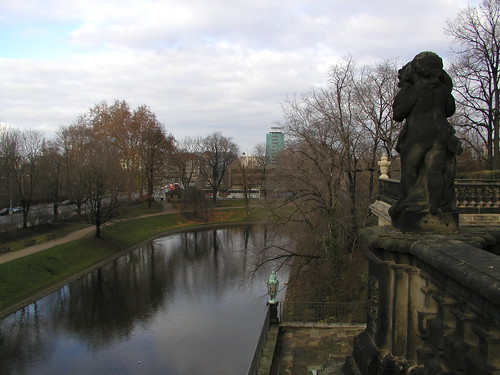
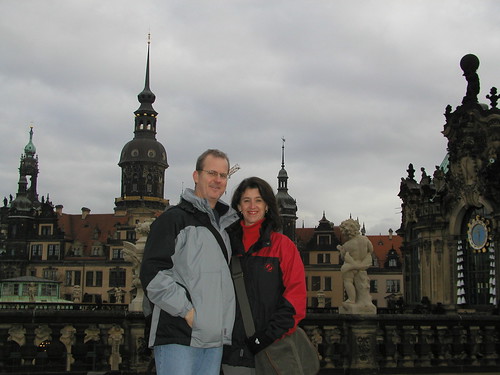
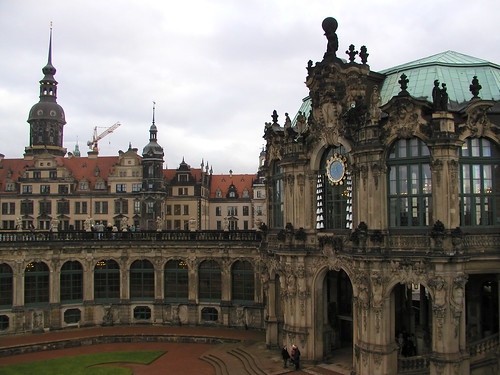
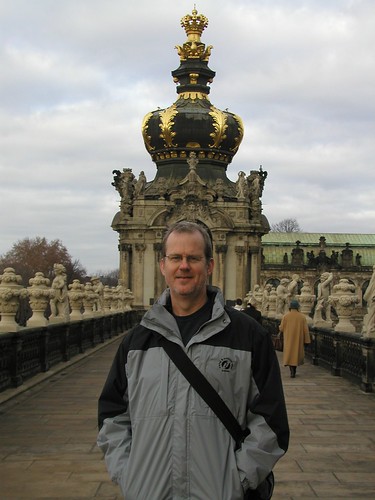
Bruhl Terrace and the Elbe River.
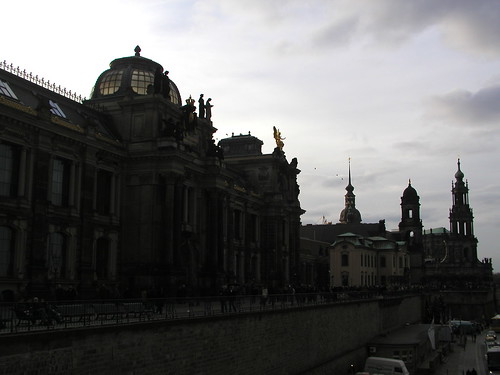
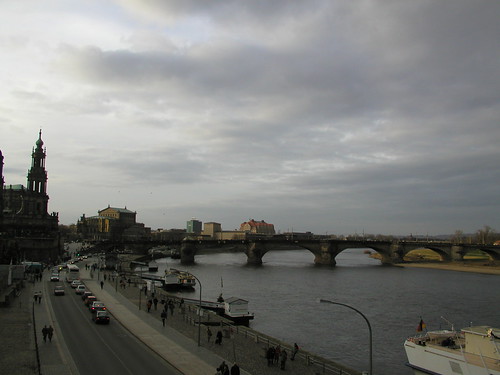
Dresden's Sachsische Staatsoper (Opera House) and square.
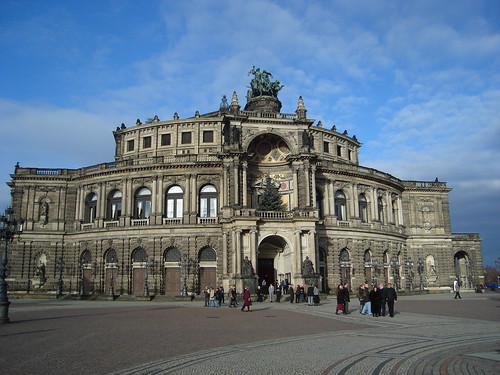
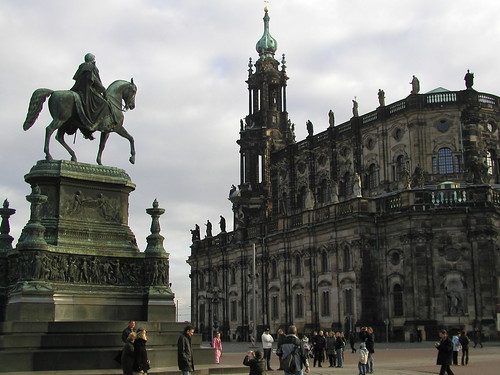
Many of the buildings continued to lie in rubble as late as 1995, when work began on several notable buildings including the Residenzschloss and the Frauenkirche. Meticulous restoration is still underway today but it ia exciting to see the city continuing to rebuild. Our recent trip allowed these photos
Frauenkirche - this Lutheran church located in the Altstadt area just completed its restoration in October 2005. Throughout the entire weekend we were visiting, the lines to enter this church snaked throughout the market square. Still, it was worth the wait to see this painstaking reconstruction - simply beautiful.








Residenzschloss - the palace continues to undergo restoration, with the most recent completion being the "Green Vaults". If you have time to only see one thing in Dresden, this is it. However, their are 2 exhibits: the Historical Green Vaults and the New Green Vaults. Both are interesting, but the Historical Green Vault is the one that allows you to see the room decor along with many of the artifacts. Tickets go on sale at 10 am every day; limited tickets are available, so get there early. Tickets for the day's tours were gone by 10:30 am.





Hofkirche - another lovely church in Dresden.


Zwinger - this "palace converted art museum" contains many of the city's greatest art treasures.






Bruhl Terrace and the Elbe River.


Dresden's Sachsische Staatsoper (Opera House) and square.


Subscribe to:
Comments (Atom)
